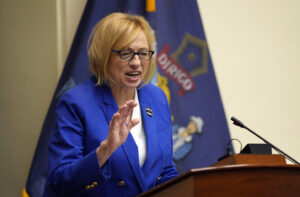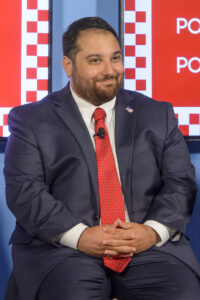The Dictatorship
A deeper look at the talks between US and Russian officials as Trump suggests Ukraine is to blame
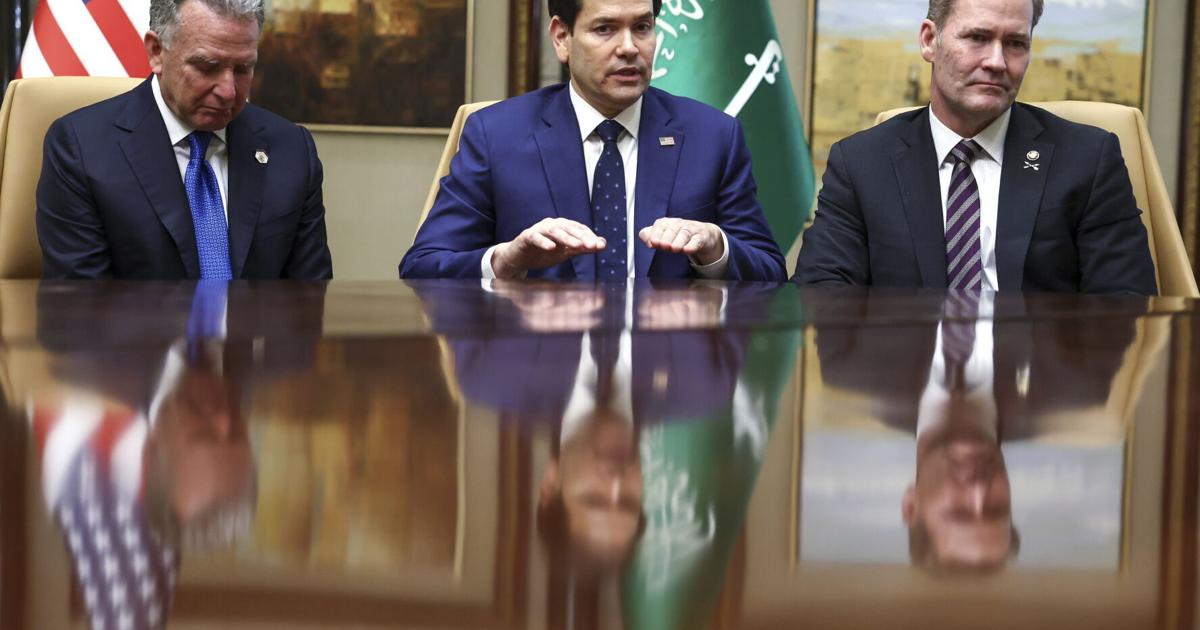
RIYADH, Saudi Arabia (AP) — Top U.S. and Russian officials had their most extensive high-level engagement since Moscow sent troops into Ukraine almost three years ago, meeting for four hours Tuesday before President Donald Trump suggested that Kyiv was to blame for the conflict.
Trump showed little patience for Ukraine’s objections to being excluded from the talks in Saudi Arabia. He said repeatedly that Ukraine’s leaders never should have allowed the conflict to begin, indicating Kyiv should have been willing to make concessions to Russia before it sent troops into Ukraine in 2022.
“Today I heard, ‘Oh, well, we weren’t invited.’ Well, you been there for three years. You should have ended it three years” ago, Trump told reporters at his Florida residence. “You should have never started it. You could have made a deal.”
Such comments and Trump’s goal of mending ties with Moscow may come at a cost to the transatlantic alliance of the U.S. and Europe and significantly damage Washington’s standing with Ukraine as well as with other nations counting on U.S. leadership in NATO and elsewhere for their security and protection.
During former President Joe Biden’s administration, the U.S. and Europe focused on isolating Russia and defending the post-World War II international order.
In Riyadh, the delegations led by U.S. Secretary of State Marco Rubio and Russian Foreign Minister Sergey Lavrov agreed to set up teams to look into restoring staffing at the U.S. and Russian embassies in Moscow and Washington that have been decimated by a series of tit-for-tat diplomatic expulsions.
The effort is aimed at using those channels to support Ukraine peace negotiations and to explore ways to restart economic and global cooperation. A Russian official pointed to possible joint energy ventures.
Here’s a look at the meeting and what comes next:
Reestablishing tattered diplomatic relations
First on both countries’ list of accomplishments was an agreement to end what has been years of dwindling diplomatic relations that hit a post-Cold War low point after Russian President Vladimir Putin sent troops into Ukraine in February 2022.
The meeting, which came just a week after Trump spoke to Putin by phone, was the first substantive face-to-face discussion between the nations’ top diplomats since former Secretary of State Antony Blinken met Lavrov in Geneva in January 2022 in an unsuccessful bid to prevent the Ukraine conflict.
Lavrov said after Tuesday’s talks that the sides agreed to fast-track the appointment of new ambassadors, adding that senior diplomats from the two countries will meet shortly to discuss specifics related to “lifting artificial barriers to the work of the U.S. and Russian embassies and other missions.”
In reality, the decimation of the U.S. and Russian embassies’ personnel began well before Russian troops rolled into Ukraine in 2022, starting after 2014 Russia’s annexation of Crimea. That was seen as illegal by most of the world during the Obama administration, which ordered several Russian offices in the U.S. to close.
It picked up steam after the 2018 poisoning in Britain of an exiled Russian spy and his daughter, which British authorities blamed on Russia, and which resulted in mass expulsions of diplomats and the closure of numerous consulates in both countries and Europe.
Asked by The Associated Press if the U.S. now considered those cases closed, Rubio declined to say but said it would be impossible to get a Ukraine peace agreement without diplomatic engagement.
“I’m not going to negotiate or talk through every element of the disruptions that exist or have existed in our diplomatic relations, on the mechanics of it,” he said. Bringing an end to the conflict cannot happen “unless we have at least some normalcy in the way our diplomatic missions operate in Moscow and in Washington, D.C.”
Negotiating an end to the conflict in Ukraine
The two sides agreed to set up high-level working groups to begin exploring a negotiated end to the conflict. It was not immediately clear when these teams would first meet, but both said it would be soon.
As to concessions that may need to be made by all sides, Trump’s national security adviser, Mike Waltz, who participated in the talks Tuesday, said the issue of territory and security guarantees would be among the subjects discussed.
Rubio said a high-level team, including experts who know technical details, will begin to engage with the Russian side on “parameters of what an end to this conflict would look like.”
On the key issue of a prospective peacekeeping mission to monitor a potential ceasefire in Ukraine, the top Russian diplomat said Moscow would not accept any troops from NATO members, repeating its assertion that Ukraine’s bid to join the Western military alliance poses a major security issue.
“We explained that the deployment of troops from the countries that are NATO members, even if they are deployed under the EU or national flags, will not change anything and will certainly be unacceptable for us,” Lavrov said.
Exclusion of Ukraine and Europe from the talks
Neither Ukraine nor European nations were invited to Tuesday’s talks in Riyadh, but U.S. officials said there is no intention to exclude them from peace negotiations should they begin in earnest.
“No one is being sidelined here,” Rubio said. “Obviously, there’s going to be engagement and consultation with Ukraine, with our partners in Europe and others. But ultimately, the Russian side will be indispensable to this effort.”
Waltz agreed: “If you’re going to bring both sides together, you have to talk to both sides. … We are absolutely talking to both sides.”
He noted that Trump spoke with Ukrainian President Volodymyr Zelenskyy immediately after speaking with Putin last week and that U.S. Vice President JD Vance and Rubio met Friday with Zelenskyy in Germany.
Still, Zelenskyy was clearly peeved at being omitted from the meeting, postponing plans to visit Saudi Arabia on Wednesday to avoid any linkage of his trip with Tuesday’s U.S.-Russia talks.
And that was before Trump’s comments suggesting Kyiv was at fault in starting the fighting.
“This whole negotiation from the start seems very tilted in Russia’s favor. And it’s even a question whether it should be termed a negotiation or in some sense, a series of American capitulations,” said Nigel Gould-Davies, senior fellow for Eurasia and Russia at the International Institute for Strategic Studies in London and a former British ambassador to Belarus.
Possible lifting of US sanctions against Russia
Asked whether the U.S. could lift sanctions against Moscow imposed during the Biden presidency, Rubio noted that “to bring an end to any conflict, there has to be concessions made by all sides” and “we’re not going to predetermine what those are.”
Asked if the U.S. could officially remove Lavrov from its sanctions list, Rubio said that “we’re just not at that level of conversation yet.”
Potential US-Russian cooperation
Kirill Dmitriev, head of the Russian Direct Investment Fund who joined the Russian delegation in Riyadh, told reporters that Russia and the U.S. should develop joint energy ventures.
“We need joint projects, including in the Arctic and other regions,” he said.
Should the parties succeed in negotiating an end to the Ukraine conflict, Rubio said, it could open “incredible opportunities” to partner with the Russians “on issues that hopefully will be good for the world and also improve our relations in the long term.”
He did not say what those would entail.
___
Isachenkov reported from Moscow. Associated Press Writer Emma Burrows in London and Jonathan J. Cooper in Phoenix contributed to this report.
The Dictatorship
Trump urges Israel to seize chance for peace ahead of Egypt summit and presses for Netanyahu pardon
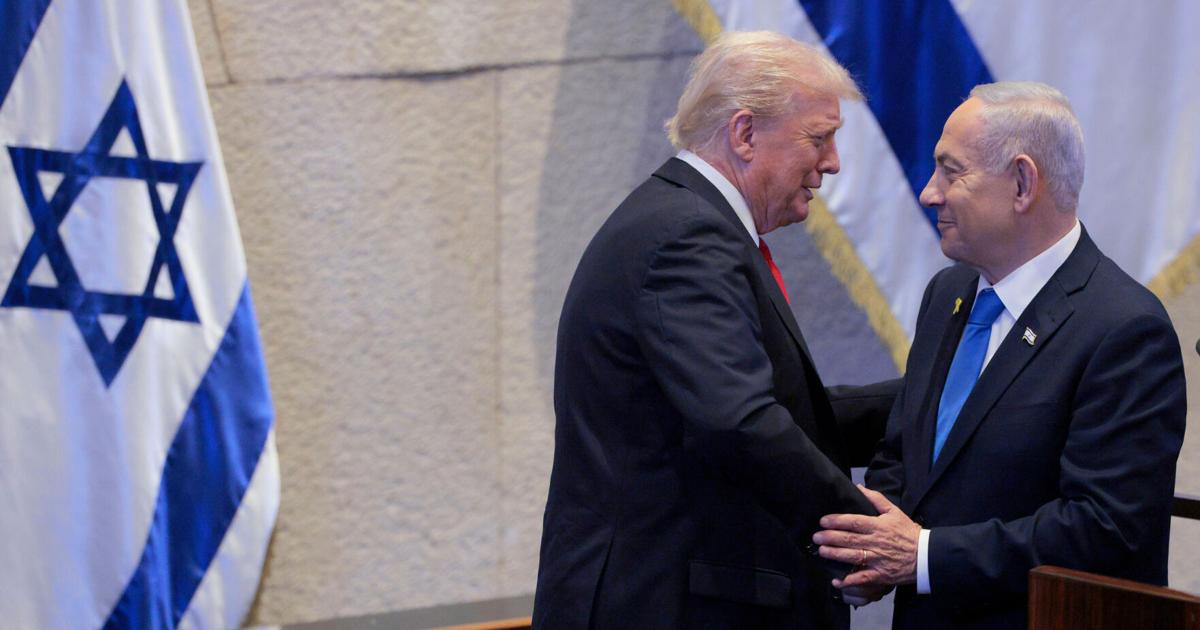
SHARM EL SHEIKH, Egypt (AP) — President Donald Trump called for a new era of harmony in the Middle East on Monday during a global summit on Gaza’s futuretrying to advance broader peace in the region after visiting Israel to celebrate a U.S.-brokered ceasefire with Hamas.
“We have a once-in-a-lifetime chance to put the old feuds and bitter hatreds behind us,” Trump said, and he urged leaders “to declare that our future will not be ruled by the fights of generations past.”
The whirlwind trip, which included the summit in Egypt and a speech at the Knesset in Jerusalem earlier in the day, comes at a fragile moment of hope for ending two years of war between Israel and Hamas.
“Everybody said it’s not possible to do. And it’s going to happen. And it is happening before your very eyes,” Trump said alongside Egyptian President Abdel Fattah el-Sissi.
Nearly three dozen countries, including some from Europe and the Middle East, were represented at the summit. Israeli Prime Minister Benjamin Netanyahu was invited but declined, with his office saying it was too close to a Jewish holiday.
Trump, el-Sissi, Turkish President Recep Tayyip Erdogan and Qatari Emir Tamim bin Hamad Al Thani signed a document outlining a broad vision that Trump said would lay the groundwork for Gaza’s future.
Despite unanswered questions about next steps in the Palestinian enclave, which has been devastated during the conflictTrump is determined to seize an opportunity to chase an elusive regional harmony.
He expressed a similar sense of finality about the Israel-Hamas war in his speech at the Knesset, which welcomed him as a hero.
“You’ve won,” he told Israeli lawmakers. “Now it is time to translate these victories against terrorists on the battlefield into the ultimate prize of peace and prosperity for the entire Middle East.”
Trump promised to help rebuild Gaza, and he urged Palestinians to “turn forever from the path of terror and violence.”
“After tremendous pain and death and hardship,” he said, “now is the time to concentrate on building their people up instead of trying to tear Israel down.”
Trump even made a gesture to Iran, where he bombed three nuclear sites during the country’s brief war with Israel earlier this year, by saying “the hand of friendship and cooperation is always open.”
Trump’s whirlwind trip
Trump arrived in Egypt hours late because speeches at the Knesset continued longer than expected.
“They might not be there by the time I get there, but we’ll give it a shot,” Trump joked after needling Israeli leaders for talking so much.
Twenty hostages were released Monday as part of an agreement intended to end the war that began on Oct. 7, 2023, with an attack by Hamas-led militants. Trump talked with some of their families at the Knesset.
“Your name will be remembered to generations,” a woman told him.
Israeli lawmakers chanted Trump’s name and gave him standing ovation after standing ovation. Some people in the audience wore red hats that resembled his “Make America Great Again” caps, although these versions said “Trump, The Peace President.”
Netanyahu hailed Trump as “the greatest friend Israel has ever had in the White House,” and he promised to work with him going forward.
“Mr. President, you are committed to this peace. I am committed to this peace,” he said. “And together, Mr. President, we will achieve this peace.”
Trump, in an unexpected detour during his speech, called on the Israeli president to pardon Netanyahu, whom he described as “one of the greatest” wartime leaders. Netanyahu faces corruption chargesalthough several hearings have been postponed during the conflict with Hamas.
The Republican president also used the opportunity to settle political scores and thank his supporters, criticizing Democratic predecessors and praising a top donor, Miriam Adelsonin the audience.
Trump pushes to reshape the region
The moment remains fragile, with Israel and Hamas still in the early stages of implementing the first phase of Trump’s plan.
The first phase of the ceasefire agreement calls for the release of the final hostages held by Hamas; the release of hundreds of Palestinian prisoners held by Israel; a surge of humanitarian aid to Gaza; and a partial pullback by Israeli forces from Gaza’s main cities.
Trump has said there’s a window to reshape the region and reset long-fraught relations between Israel and its Arab neighbors.
“The war is over, OK?” Trump told reporters traveling with him aboard Air Force One.
“I think people are tired of it,” he said, emphasizing that he believed the ceasefire would hold because of that.
He said the chance of peace was enabled by his Republican administration’s support of Israel’s decimation of Iranian proxies, including Hamas in Gaza and Hezbollah in Lebanon.
The White House said momentum is also building because Arab and Muslim states are demonstrating a renewed focus on resolving the broader, decades-long Israeli-Palestinian conflict and, in some cases, deepening relations with the United States.
In February, Trump had predicted that Gaza could be redeveloped into what he called “the Riviera of the Middle East.” But on Sunday aboard Air Force One, he was more circumspect.
“I don’t know about the Riviera for a while,” Trump said. “It’s blasted. This is like a demolition site.” But he said he hoped to one day visit the territory. “I’d like to put my feet on it, at least,” he said.
The sides have not agreed on Gaza’s postwar governance, the territory’s reconstruction and Israel’s demand that Hamas disarm. Negotiations over those issues could break down, and Israel has hinted it may resume military operations if its demands are not met.
Much of Gaza has been reduced to rubbleand the territory’s roughly 2 million residents continue to struggle in desperate conditions. Under the deal, Israel agreed to reopen five border crossings, which will help ease the flow of food and other supplies into Gaza, parts of which are experiencing famine.
Roughly 200 U.S. troops will help support and monitor the ceasefire deal as part of a team that includes partner nations, nongovernmental organizations and private-sector players.
___
Megerian reported from Washington. Associated Press writers Will Weissert and Seung Min Kim in Washington contributed to this report.
___
Follow the AP’s coverage of the Israel-Hamas war at https://apnews.com/hub/israel-hamas-war.
The Dictatorship
Naked bike riders demonstrate against troops in Portland…
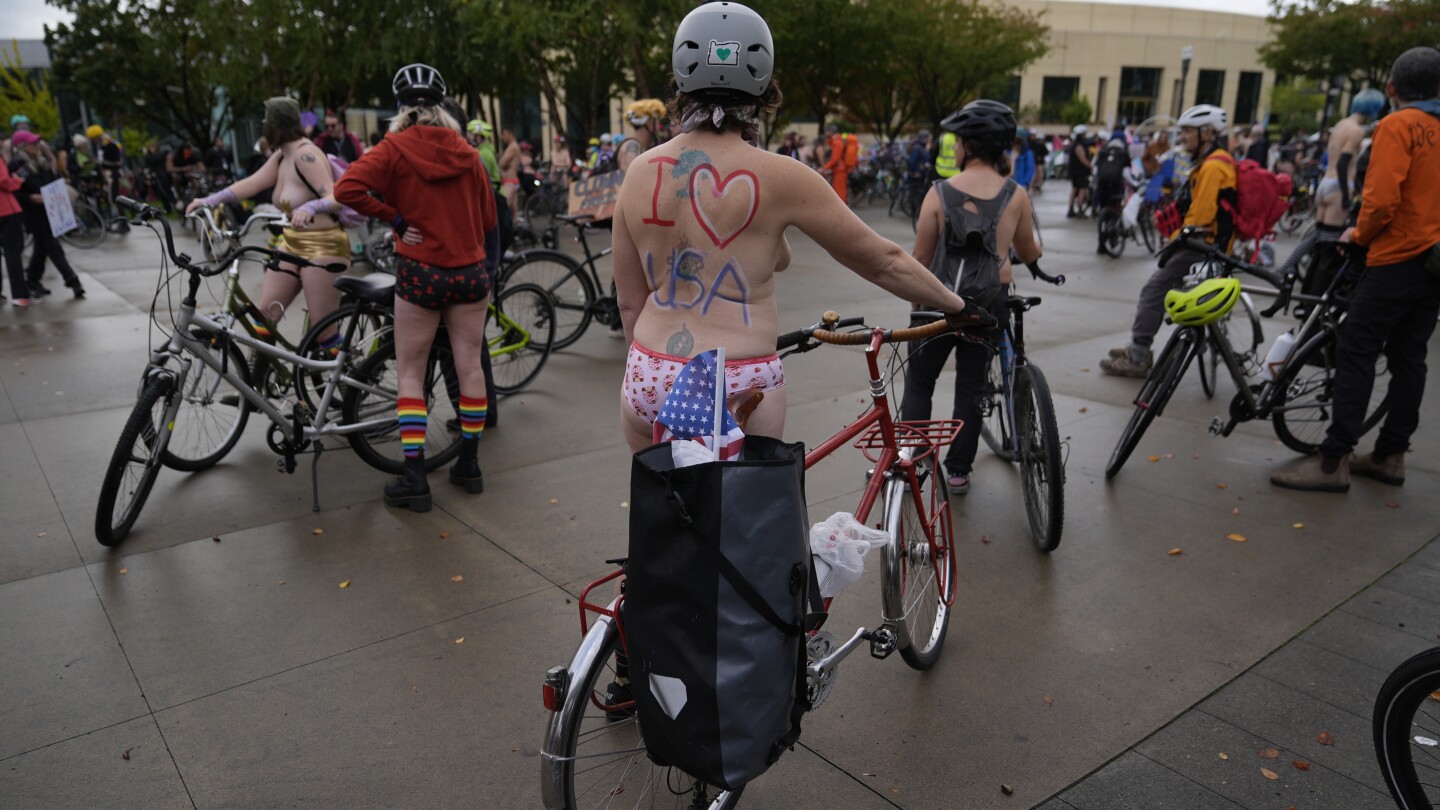
PORTLAND, Ore. (AP) — Protesters rallying against the Trump administration in Portland put the city’s quirky and irreverent reputation on display Sunday by pedaling through the streets wearing absolutely nothing — or close to it — in an “emergency” edition of the annual World Naked Bike Ride.
Crowds that have gathered daily and nightly outside the immigration facility in Oregon’s largest city in recent days have embraced the absurd, donning inflatable frog, unicorn, axolotl and banana costumes as they face off with federal law enforcement who often deploy tear gas and pepper balls.
The bike ride is an annual tradition that usually happens in the summer, but organizers of this weekend’s hastily called event said another nude ride was necessary to speak out against President Donald Trump’s attempts to mobilize the National Guard to quell protests.
Rider Janene King called the nude ride a “quintessentially Portland way to protest.”
The 51-year-old was naked except for wool socks, a wig and a hat. She sipped hot tea and said she was unbothered by the steady rain and temperatures in the mid-50s (about 12 Celsius).
“We definitely do not want troops coming into our city,” King said.
Bike riders made their way through the streets and to the city’s U.S. Immigration and Customs Enforcement building. Authorities there ordered people to stay out of the street and protest only on sidewalks or risk being arrested.
The city is awaiting the ruling of an appeals court panel on whether Trump can send out the federalized troops after a federal judge on Oct. 5 ordered a temporary hold on deployment.
“Joy is a form of protest. Being together with mutual respect and kindness is a form of protest,” the ride’s organizers said on Instagram. “It’s your choice how much or little you wear.”
Fewer people were fully naked than usual — likely because of the cool, wet weather — but some still bared it all and rode wearing only bike helmets.
Naked bike rides have thronged the streets of Oregon’s largest city every year since 2004, often holding up traffic as the crowd cycles through with speakers playing music. Some years have drawn roughly 10,000 riders, according to Portland World Naked Bike Ride.
___
Weber reported from Los Angeles.
The Dictatorship
China calls for US to withdraw tariff threat
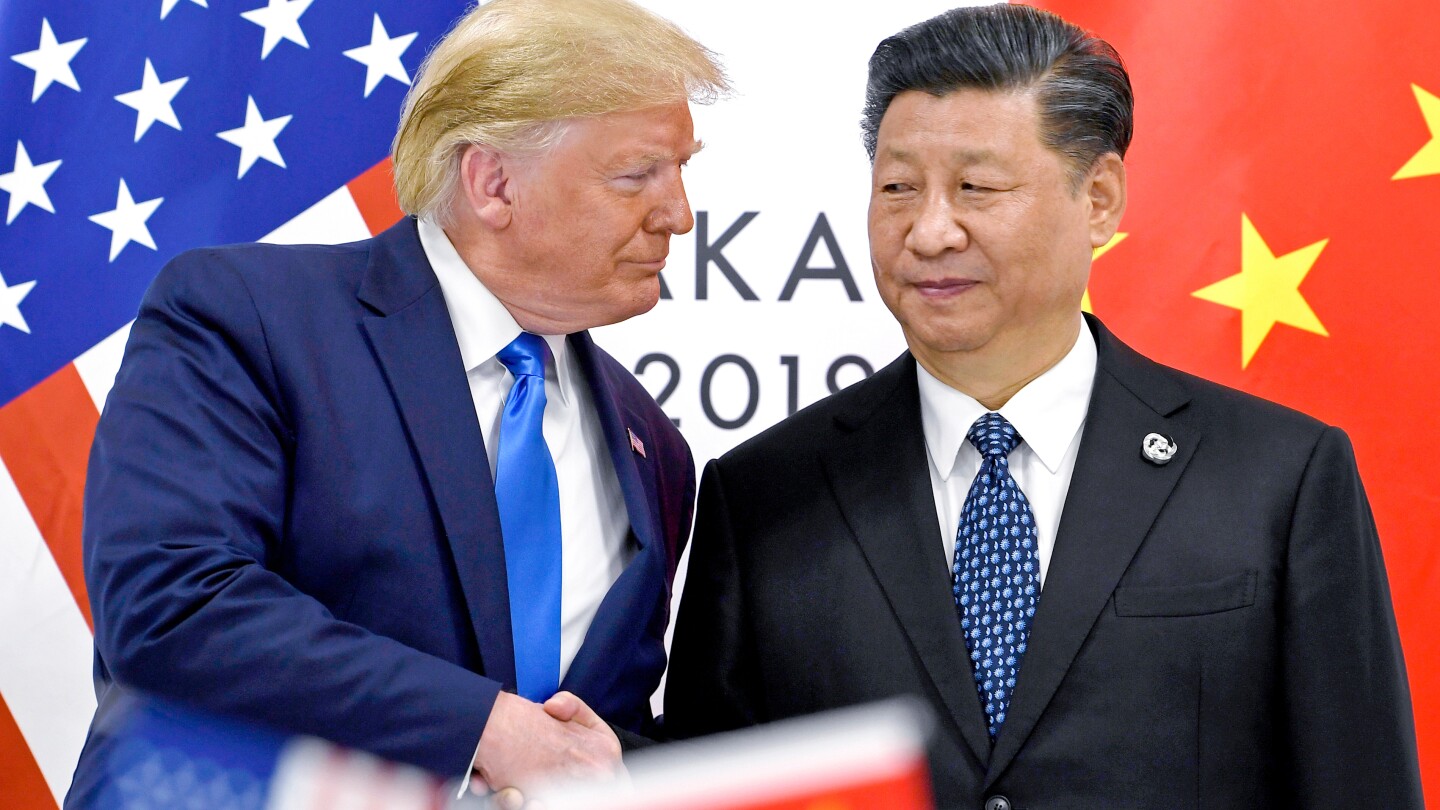
BANGKOK (AP) — China did not back down Monday in a back-and-forth with the U.S. over trade, calling for U.S. President Donald Trump to withdraw his latest threat of a 100% tariff and other export control measures announced over the weekend.
In the latest escalation of the trade war between the two nations, Trump issued the tariff threat on all Chinese imports into the U.S. after China placed stricter restrictions Thursday on rare earths, a vital resource used in electronics.
The Chinese announcement was an apparent surprise to Trump, who called it an “out of the blue” move. While Trump did not withdraw the economic threat, he sounded more conciliatory than in the past, saying in a Truth Social post Sunday, “The U.S.A. wants to help China, not hurt it!!!”
China’s Ministry of Commerce issued a lengthy response Sunday saying the U.S. was “severely damaging the atmosphere of trade negotiations.”
“China urges the U.S. to promptly correct its erroneous practices,” Chinese Ministry of Foreign Affairs spokesman Lin Jian said Monday. “If the U.S. insists on going its own way, China will certainly take resolute measures to safeguard its legitimate rights and interests.”
Both nations have leveraged multiple dimensions of the trade relationship in the trade war, with actions ranging from U.S. restrictions on China’s ability to import advanced computer chips, China ending purchases of American soybeans and an exchange of tit-for-tat port fees.
Economic indicators show the retaliatory actions and uncertainty are impacting trade between the countries. Chinese trade data release Monday showed exports to the U.S. have fallen for six straight months, dropping 27% in September from the year before.
-
Uncategorized11 months ago
Bob Good to step down as Freedom Caucus chair this week
-
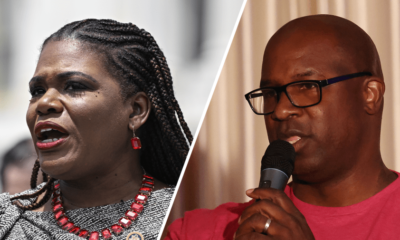
 Politics8 months ago
Politics8 months agoFormer ‘Squad’ members launching ‘Bowman and Bush’ YouTube show
-
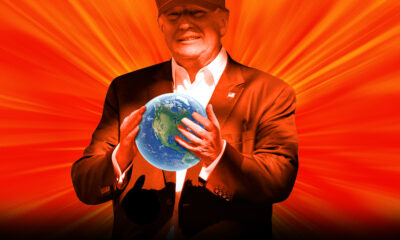
 The Josh Fourrier Show11 months ago
The Josh Fourrier Show11 months agoDOOMSDAY: Trump won, now what?
-
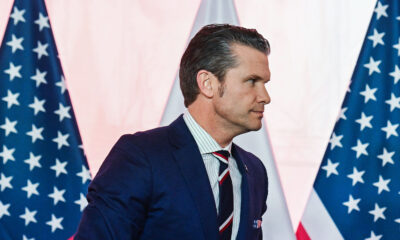
 The Dictatorship8 months ago
The Dictatorship8 months agoPete Hegseth’s tenure at the Pentagon goes from bad to worse
-

 The Dictatorship8 months ago
The Dictatorship8 months agoLuigi Mangione acknowledges public support in first official statement since arrest
-
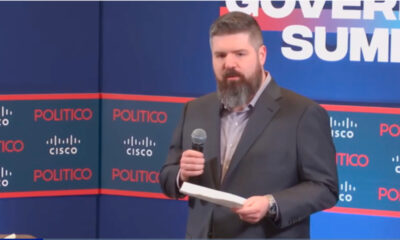
 Politics8 months ago
Politics8 months agoBlue Light News’s Editorial Director Ryan Hutchins speaks at Blue Light News’s 2025 Governors Summit
-
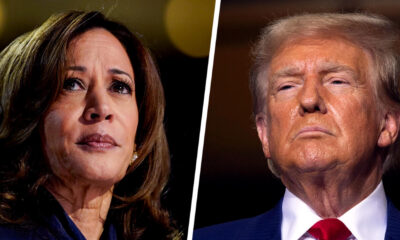
 Politics11 months ago
Politics11 months agoWhat 7 political experts will be watching at Tuesday’s debate
-
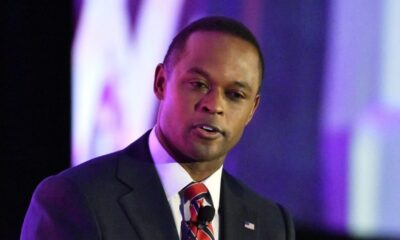
 Politics8 months ago
Politics8 months agoFormer Kentucky AG Daniel Cameron launches Senate bid


